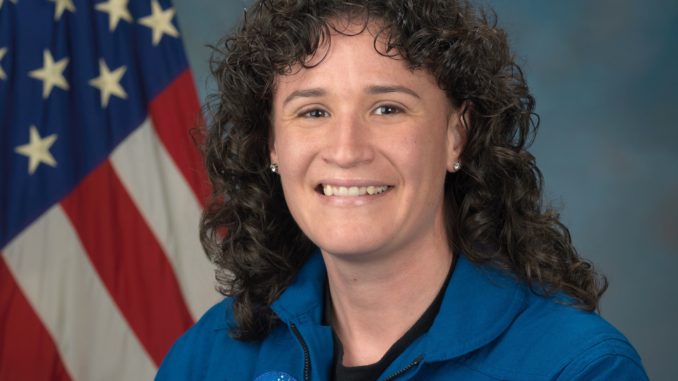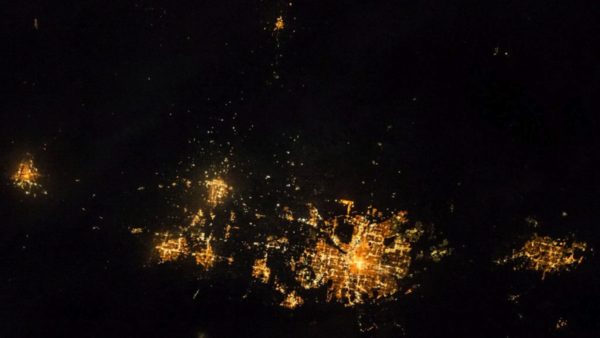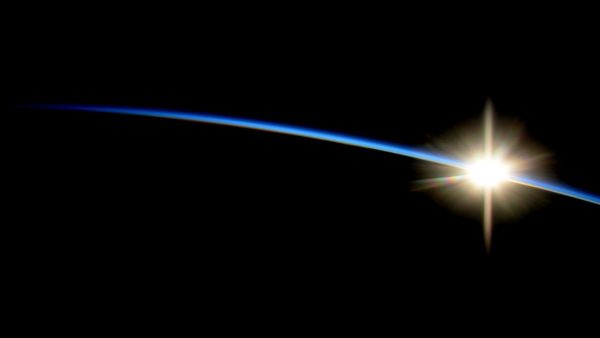
Sally Roth
sroth@northfortynew.com
Today’s International Space Station (ISS) is celebrating its 20th anniversary this year. And crews, which now serve 6 months, still have to deal with the psychological stress of living and working together in a very small space, with no possibility of, say, taking a walk to cool off.
But humans can get used to just about anything, and after a few difficult weeks, the lack of privacy, the isolation from friends and family, the complications of near-zero gravity—where even a floating food crumb can affect delicate equipment—all become routine.
“[T]he shock of novelty is no longer felt,” and life in space becomes the new normal, according to a 1998 study.
Despite all these challenges, the competition to be an astronaut on the ISS is stiff. More than 3500 applicants vied to be chosen as one of the 14 members of NASA’s twentieth astronaut group in 2009.
One of those coveted spots was won by Serena Auñon-Chancellor, a 1993 Poudre High School grad.
She’ll be launching on June 6 as a member of Expedition 56/57 of the International Space Station, if all goes as planned.
Screaming for joy
When Serena watched a launch of the space shuttle on TV as an elementary school kid, she knew immediately that she wanted to be an astronaut. (Space shuttles were the reusable supply ships for the ISS until 2011; since then, Russian and private supply ships like those of SpaceX do the job.)
And when she finally made the cut in 2009? “I actually screamed inside my car,” she told NASA. “Then I called my family immediately.”
That family includes her father, Cuban immigrant Dr. Jorge Auñon, retired dean of engineering at the University of Alabama, and her mother, Fort Collins resident Margaret Auñon, much better known by her pen name, Maggie Sefton, under which she writes bestseller mystery novels, including a popular series set at Lambspun Yarn of Fort Collins.
Serena had even bigger odds to beat in that astronaut class. Women are still very much a minority among astronauts. (Only 60 of 537 astronauts, as of 2016, have been women.) She will be the second woman of Hispanic heritage to go up in space.
—From the journal of cosmonaut Valery Ryumin aboard Salyut 6, an early Russian space station.
Is there a doctor in the house?
Dr. Serena Auñon-Chancellor holds a medical degree with certifications in internal medicine and aerospace medicine, skills that she’s been using ever since.
But even that achievement barely scratches the surface of her intrepid career. (Couch potatoes, brace yourselves….)
Auñon-Chancellor is an aquanaut, as well as an astronaut. She’s lived and worked deep under the sea in “Aquarius,” the world’s only undersea research station, a part of NASA’s Extreme Environment Mission Operations (NEEMO, for short).
She’s also lived on the ice about 150 miles from the South Pole, as part of an Antarctic Search for Meteorites (ANSMET) expedition, searching for the space rocks in the Transantarctic Mountains.
“Most important is that the decisions I made in my professional career were not toward a specific goal,” said Serena in a NASA interview, “but because I loved what I was doing at the time.”
Hiking in Colorado is one of her favorite activities, although Auñon-Chancellor now lives near Houston (hello, Mission Control!) with her physicist husband and stepdaughter.

Soon, astronaut Serena Auñon-Chancellor may be seeing a similar view of the Front Range at night as in this photo taken from aboard the ISS. From left: Cheyenne, Fort Collins, Greeley, Boulder, Denver and Colorado Springs.
Wave to Serena!
Watch the launch of Expedition 56/57 live on NASA TV on June 6 (date is subject to change; check NASA for updates) at https://nasa.gov/multimedia/nasatv/
Once she’s up and away, you’ll be able to actually see her spaceship going by! The ISS, which follows a “low earth orbit,” is one of the brightest objects in the night sky, easy to spot as it passes by overhead. To those of us waving from below, the ISS looks like it’s traveling relatively slowly. But that craft is zipping along at a speed of about 17,000 mph!
Sign up at https://spotthestation.nasa.gov/ to get email alerts about flyovers visible in our area. Join NASA’s Facebook page, too, at https://facebook.com/NASA/, because live Facebook chats with the astronauts are often part of the expeditions. To learn much more about the ISS—including how to become an astronaut—explore the NASA website at https://nasa.gov

Another sunrise begins, as seen from the ISS. Astronauts see 16 sunrises and sunsets every 24 hours.
Life aboard the ISS
What is the ISS?
The ISS is an orbiting research lab, a cooperative effort of the U.S., Russia, Canada, Europe (including the U.K. and 10 other countries), and Japan. That in itself is amazing, but now, let’s get to the questions we’re all curious about.
How do ISS astronauts go to the bathroom?
Think pooper-scooping after your pet is rough? Easy-peasy, compared to what an ISS astronaut has to go through. First, the astronaut must fasten him- or herself to the seat, then operate a lever to start a powerful suction fan and open a hole to grab the waste. “Urine funnel collectors” carry away urine to be recycled into—ready?—safe drinking water. Solid waste goes into individual bags that the astronauts collect for eventual disposal.
What do they eat?
The onboard galley includes food warmers and an all-important water dispenser to reconstitute freeze-dried food and powdered drinks. Meals are in plastic bags, so that crumbs don’t go airborne. Astronauts use a fork that’s attached with magnets between bites, and a straw for soup and drinks. Supply ships deliver a real prize—fresh fruit and veggies!
How do they keep clean?
Everything floats on the ISS, so a shower is out of the question. Water is precious, so the crew uses a water jet and wet wipes to wash. ISS shampoo needs no rinsing; soap is in a tube, like toothpaste; and toothpaste itself is edible, so it’s swallowed.
How do they sleep?
The Space Station orbits Earth once every 92 minutes—which means that the astronauts get to see 16 sunrises and sunsets every 24 hours. Windows are covered during sleep time to mimic darkness on Earth. Tethered sleeping bags, in soundproofed “person-sized” compartments, keep sleepers from floating around and bumping into sensitive equipment.
Support Northern Colorado Journalism
Show your support for North Forty News by helping us produce more content. It's a kind and simple gesture that will help us continue to bring more content to you.
BONUS - Donors get a link in their receipt to sign up for our once-per-week instant text messaging alert. Get your e-copy of North Forty News the moment it is released!
Click to Donate